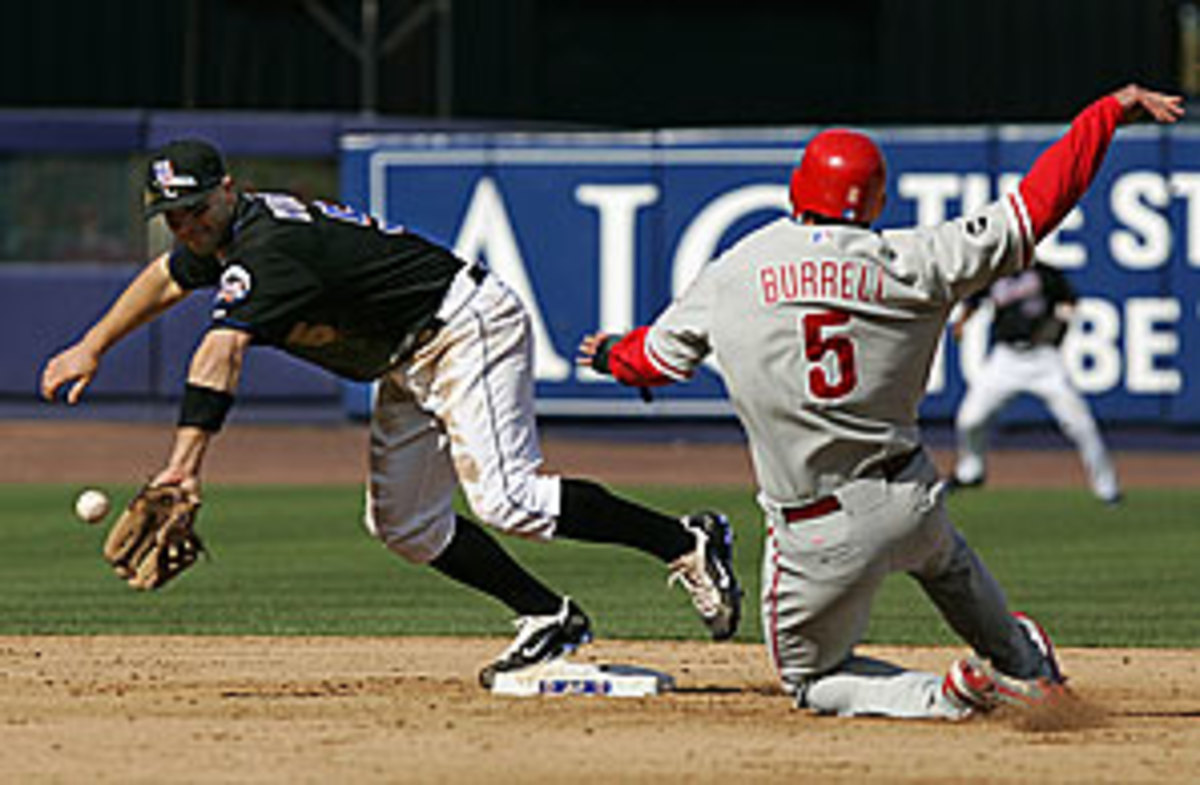Dramatic September comebacks are not as common as you think
I come bearing bad news for fans of the Red Sox, White Sox, Cardinals, Rockies, and great September pennant races. Barring a comeback of historic proportions, the eight playoff berths are virtually locked up with the exception of the NL wild card.
The Yankees, Rays, Twins, Rangers, Braves, Reds and Padres all began September holding a playoff position by a lead of at least four games (including a fallback wild-card lead for Atlanta). That doesn't sound like much of a lock, until you understand some of the history of the 14 full seasons (1996-2009) under the six-division, wild card format:
• September comebacks, no matter how small, are rare: only 19 of the 112 playoff teams (17 percent) did not hold at least a share of a playoff spot on Sept. 1.
• Big September comebacks -- even modestly big -- are shockingly rare: only one of 112 playoff teams was more than 3-½ games out of playoff spot on Sept. 1: the 2007 Rockies, who were five out. And all they had to do to get in was finish 14-1, including a tight win in a one-game playoff.
There is an old theory that you best keep within one game of a playoff spot for every week left in the season. But even that doesn't sound urgent enough given such a history.
(Disclaimer Department: You might recall the 2007 Phillies trailed the Mets by seven games with 17 to play and won their division. True enough. But this is only a Sept. 1 snapshot to help you understand what defines a big last-month comeback. The 2007 Phillies were two games back on Sept. 1.)
Today, the White Sox trail the Twins by three in the loss column and still play Minnesota three more times -- at home. So yes, Chicago still has a fighting chance (coolstandings.com gives the Sox a 17.4 percent chance at reaching the postseason), but the point is that it would take the kind of September comeback that almost never happens.
If the pattern holds up, the AL will have only one September comeback among its last 16 playoff teams since 2007 (the 2009 Twins), and baseball will have no team from the Chicago and Los Angeles markets (including the Angels) in the postseason for the first time since 2001.
The Dodgers are better off having given away Manny Ramirez for nothing and the White Sox are better off paying $3.8 million for one month for a dude who hit his last home run on June 19. The dumping of Ramirez is a win-win situation, even if both clubs may be watching the playoffs on television.
As hard as it may be to believe, the Dodgers are a better club with Scott Podsednik in the lineup than Ramirez -- this version of Ramirez, not the enhanced 2008 Mannywood model. That's because Ramirez, at 38, cannot play everyday in the National League. His defense is poor, his legs are breaking down, he can't play day games after night games, and he has opted out of lineups.
And when he does play, he is no longer a power threat. He becomes a six-inning player if his team has the lead, and running in the outfield and on the bases puts him at risk of another leg injury. There is no reliability with Ramirez if he has to play the outfield. His days as a National League player, short as they were, are history. So the Dodgers, who have been a bad team for the equivalent of half a year (37-44), are wise to put the money toward Frank McCourt's legal fees.
The good news for the White Sox is that Ramirez, despite his loss of power, can still hit, and hitting is what they need. More good news: he doesn't have to play the outfield, they're getting him in a short dose, and he is playing for a contract. It's exactly as you would prefer to have Ramirez: no glove, no guarantees, no commitment.
Indeed, Ramirez better make the most of this chance if he wants to extend his career. At best, he is this winter's version of what Vlad Guerrero was last year. Guerrero took a $5 million deal with Texas. But Guerrero also was four years younger and had been more durable.
A better comp might be Jim Thome, the guy on whom the White Sox passed, creating this need for Ramirez in the first place. Thome was 38 last winter and a pure DH and he waited until late January to get a $1.5 million deal from Minnesota.
The elbow injury to Stephen Strasburg, and the stress on his arm at a young age in the big leagues, got me thinking: how many fireballing phenoms actually pan out -- other than Bob Feller? It does seem as if some of the most exciting, most hyped young starting pitchers break down or don't maintain their skills into their 30s (Mark Fidrych, Fernando Valenzuela, Hideo Nomo, Kerry Wood, Mark Prior, Dontrelle Willis, etc.).
Admittedly, that's an anecdotal list, but what if we ranked the best young strikeout pitchers by strikeouts per nine innings and see what happened to them after their big debuts?
So here's the list: the 10 starting pitchers with the best strikeout rates in their debut season (min.: 12 starts):
So there you have it. No Hall of Famers. Four losing records. Only one guy with a winning record with at least 100 wins. It's fun to watch, but maybe it's not such a promising thing to be blowing away hitters as soon as you get to the majors at such a young age.






